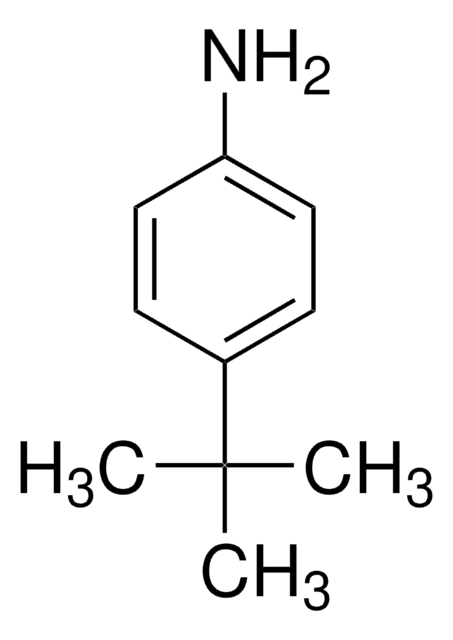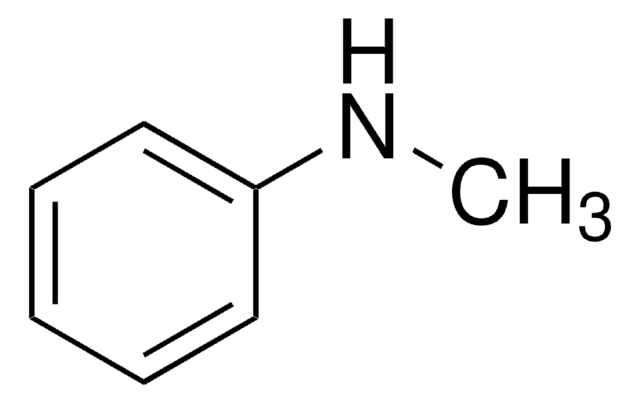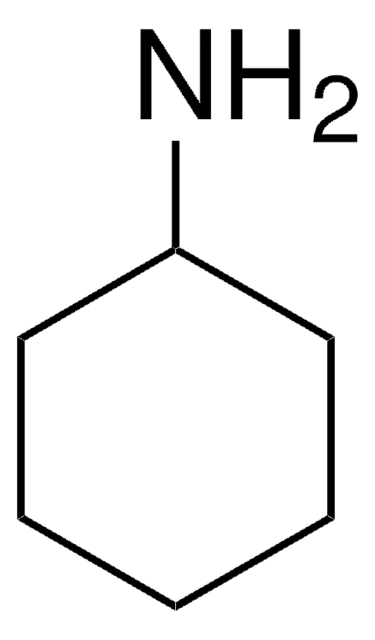132934
Aniline
ReagentPlus®, 99%
Sinónimos:
Aminobenzene, Benzenamine
About This Item
Productos recomendados
grado
reagent
Nivel de calidad
densidad de vapor
3.22 (185 °C, vs air)
presión de vapor
0.7 mmHg ( 25 °C)
Línea del producto
ReagentPlus®
Ensayo
99%
Formulario
liquid
temp. de autoignición
1139 °F
lim. expl.
11 %
dilution
(for general lab use)
índice de refracción
n20/D 1.586 (lit.)
pH
8.8 (20 °C, 36 g/L)
bp
184 °C (lit.)
mp
−6 °C (lit.)
solubilidad
water: soluble
densidad
1.022 g/mL at 25 °C (lit.)
cadena SMILES
Nc1ccccc1
InChI
1S/C6H7N/c7-6-4-2-1-3-5-6/h1-5H,7H2
Clave InChI
PAYRUJLWNCNPSJ-UHFFFAOYSA-N
¿Está buscando productos similares? Visita Guía de comparación de productos
Categorías relacionadas
Descripción general
Aplicación
Acciones bioquímicas o fisiológicas
Propiedades físicas
Información legal
Palabra de señalización
Danger
Frases de peligro
Clasificaciones de peligro
Acute Tox. 3 Dermal - Acute Tox. 3 Inhalation - Acute Tox. 3 Oral - Aquatic Acute 1 - Aquatic Chronic 1 - Carc. 2 - Eye Dam. 1 - Muta. 2 - Skin Sens. 1 - STOT RE 1
Órganos de actuación
Blood
Código de clase de almacenamiento
6.1A - Combustible acute toxic Cat. 1 and 2 / very toxic hazardous materials
Clase de riesgo para el agua (WGK)
WGK 3
Punto de inflamabilidad (°F)
158.0 °F - closed cup
Punto de inflamabilidad (°C)
70 °C - closed cup
Equipo de protección personal
Eyeshields, Faceshields, Gloves, type ABEK (EN14387) respirator filter
Elija entre una de las versiones más recientes:
¿Ya tiene este producto?
Encuentre la documentación para los productos que ha comprado recientemente en la Biblioteca de documentos.
Los clientes también vieron
Nuestro equipo de científicos tiene experiencia en todas las áreas de investigación: Ciencias de la vida, Ciencia de los materiales, Síntesis química, Cromatografía, Analítica y muchas otras.
Póngase en contacto con el Servicio técnico












